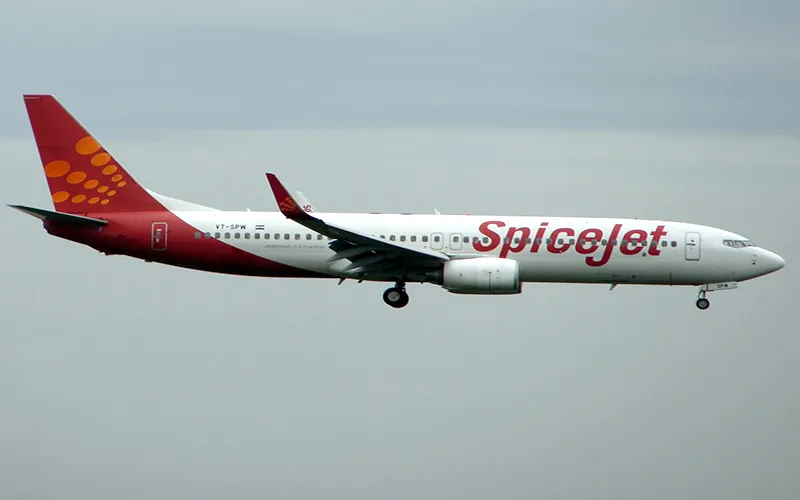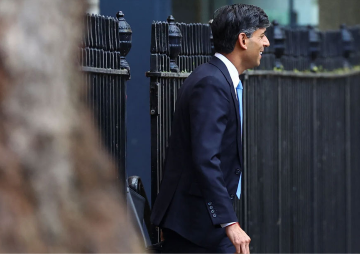The colour red seems inauspicious for airlines in India. With the news of the inevitable shutdown of SpiceJet, memories of the Kingfisher Airlines debacle have been refreshed. The warning of history repeating itself may have fallen on deaf ears this time around, as events of 2012 surrounding Kingfisher Airlines seem to be unfolding again in 2014 for the low-cost SpiceJet, and the prospects of another airline biting the dust are only too real.
The similarities between Kingfisher Airlines and SpiceJet regarding their financial woes, are uncanny. Where the KFA required nearly Rs4000 crore capital infusion to stay afloat in 2012, Spice Jet now requires Rs2100 crore. The same Directorate General of Civil Aviation mandate which disallowed the sales of future tickets, applied to Kingfisher and now applies to SpiceJet operations. Much like Kingfisher, SpiceJet has reduced its daily operation from 330 flights down to 237 flights, and has cancelled almost 1800 flights between December 8 and December 31. SpiceJet too has been reduced to cash and carry operations for fuel. Even the financial audit reports of the two companies seem similarly worded.
What is unknown though is the state of salaries of employees and crews of the newly beleaguered airline. While it was well known that the KFA crews had not been paid for months on end, no information on SpiceJet compensations is available. But the exodus of pilots that the KFA saw in its last days is apparent in SpiceJet already - and perhaps it's an indication of the status of salaries. Some 125 of the 500 odd pilots have already quit and 55 of them have moved or applied to the other larger airlines in the country.
There are a few differences between the experiences of Kingfisher and SpiceJet, though. First in terms of financials, the KFA's liabilities and dues amounted to more than Rs6500 crore; SpiceJet's liabilities are still much lower at Rs1500 crore. SpiceJet's borrowings are backed by fixed deposits and securities, the KFA's were backed by personal guarantees. Kingfisher was heavily funded by Indian financial firms, while the bulk of SpiceJet's liabilities are through a Canadian bank used for procurement of the Bombardier aircraft.
Second, during Kingfisher Airlines' troubles, aviation reforms of 49 per cent foreign direct investment or direct import of aviation fuel had not been made, thus making it harder for the bankrupt company to save itself.
Third, SpiceJet is not represented by a flamboyant owner whose continued pursuance of a grandiose lifestyle indicated that he cared little about what became of the airline. It is perhaps because of this that the Government is actively pursuing to save SpiceJet from its financial woes rather than let it crumble into bankruptcy.
Until Kingfisher's finality in October 2012, Government help for the airline was marred in debate on why the taxpayers' money or Government support should at all be given to an entrepreneur who seemed to flounder away company resources in his pursuit to provide a five-star experience. But SpiceJet's financial woes are not a result of cyclical movements in the industry. With 18 per cent of the market, SpiceJet was effectively the third-largest carrier in the country. Its looming demise seems largely the result of lapses in management, as was the case with Kingfisher Airlines. It is, thus, important to wonder why the Government is so willing to help SpiceJet just as much as it was ready to wash its hands off Kingfisher.
The arguments centre on the plight of the 20,000 people who will directly or indirectly be effected by a shutdown of SpiceJet operations. Employees in Kingfisher Airlines numbered in the same league. Other arguments suggest that a shutdown would send wrong signals to foreign investors. But that would have been the same result post the Kingfisher shutdown. Some say a shutdown would give the remaining few companies (all of which are painted blue, except Air India, whose financial troubles are well known) monopolistic control over the market. But Kingfisher Airlines' demise gave Jet Airways complete control of the luxury aviation market in India. Only until the announcement of Vistara this year, has Jet Airways faced any prospect of competition. Finally, the political connection of SpiceJet ownership may be a strong driver of Government intervention - the one factor Kingfisher owner Vijay Mallya had going largely against him.
The Government has requested banks to provide fresh loans for the ailing airline to the tune of Rs600 crore. It is even considering allowing external commercial borrowing as a special dispensation. But why now? Governments have long ignored the underlying issues when it comes to civil aviation and have often stood by while aviation companies have folded operations. The DGCA has hardly ever acted as the regulator that Indian aviation needs and successive Governments have failed to address the key problems that allows aviation companies to fold so easily. So, what is so different this time around that justifies an intervention by the DGCA?
The aviation industry is a crucial sector for the Indian economy. With an annual growth rate of 18 per cent to 22 per cent, civil aviation business cannot be ignored. While the change in strategy of the Centre vis-à-vis SpiceJet is a good and forward-looking step, the justification of allowing so many airlines to perish before this, must be underlined. But more importantly, both the DGCA and the Union Ministry of Civil Aviation must start to pay far closer attention to the industry in a holistic manner. They must learn from the experiences of both these major airlines - one dead and the other floundering - to be able to nip financial problems before they become looming crises. They must regulate and respond, rather than watch as spectators.
The turbulent history of the sector and the threat of a bumpy future given its current situation, are not good for the economy or the image of India as a rising economic power through private entrepreneurship. At the very least though, the colour red should be banned from Indian skies!
Courtesy: Pioneer
The views expressed above belong to the author(s). ORF research and analyses now available on Telegram! Click here to access our curated content — blogs, longforms and interviews.




 PREV
PREV

